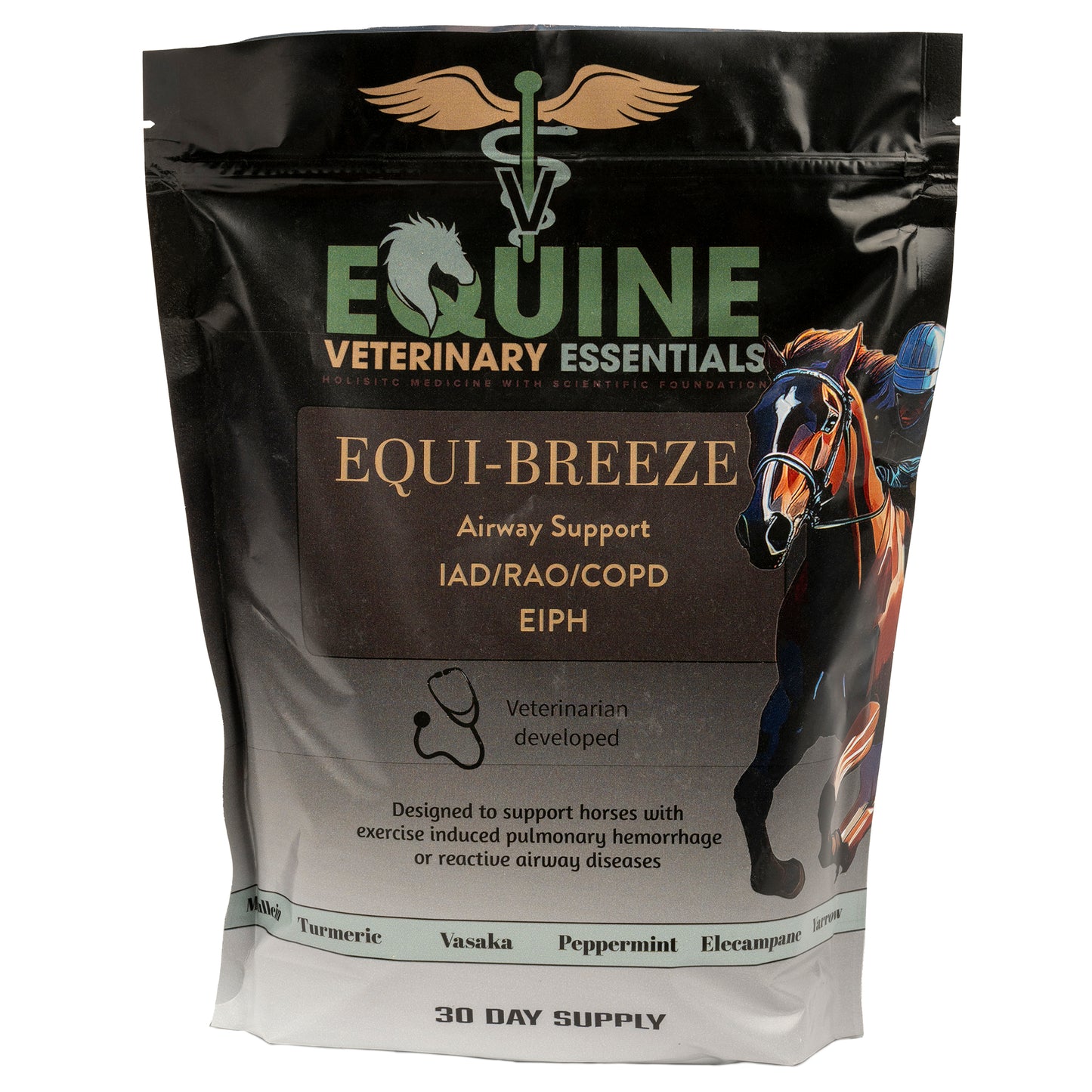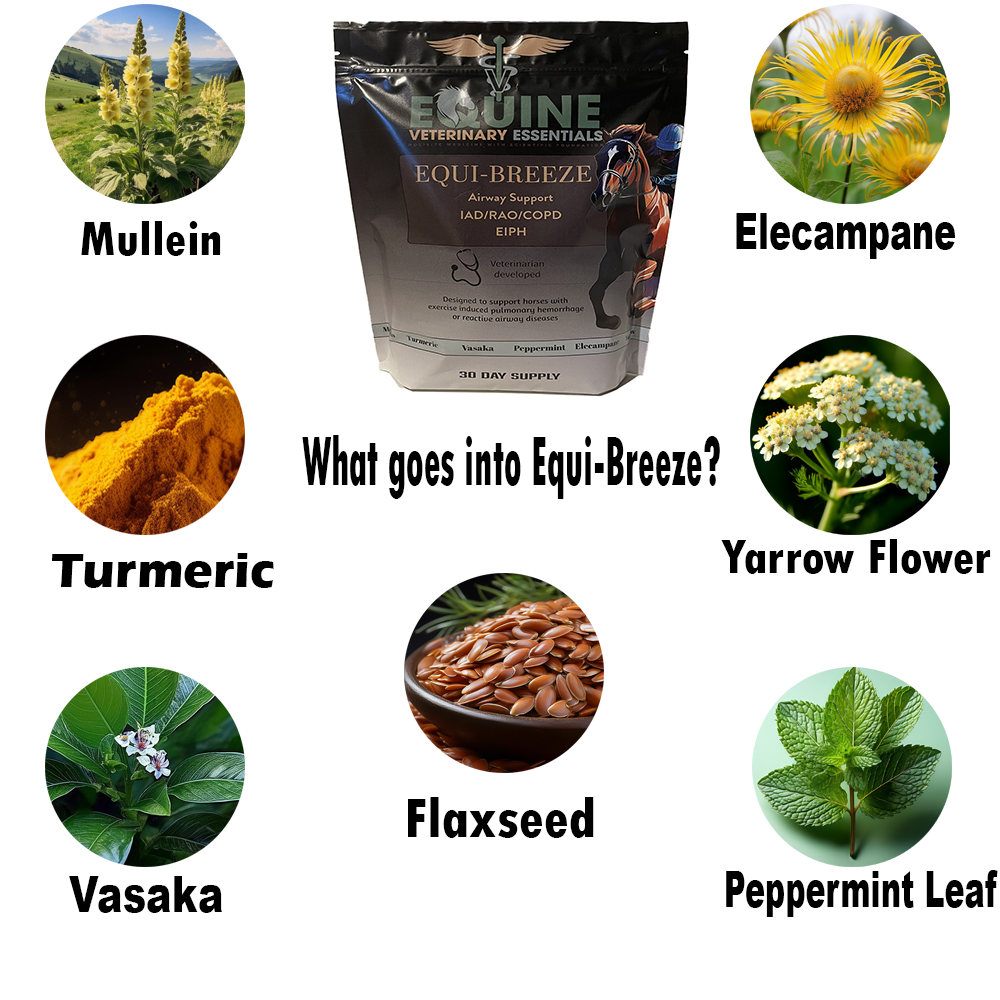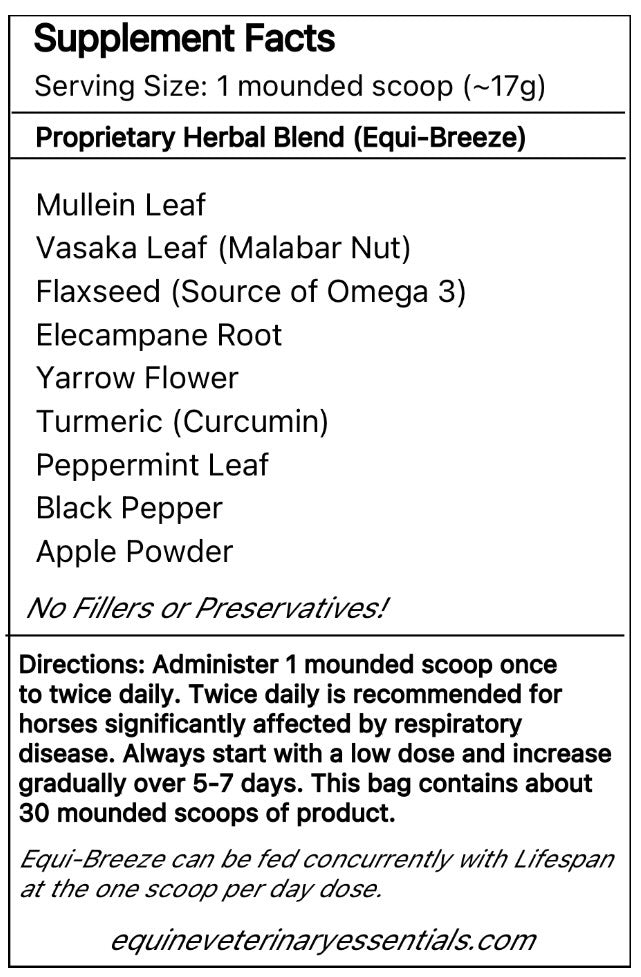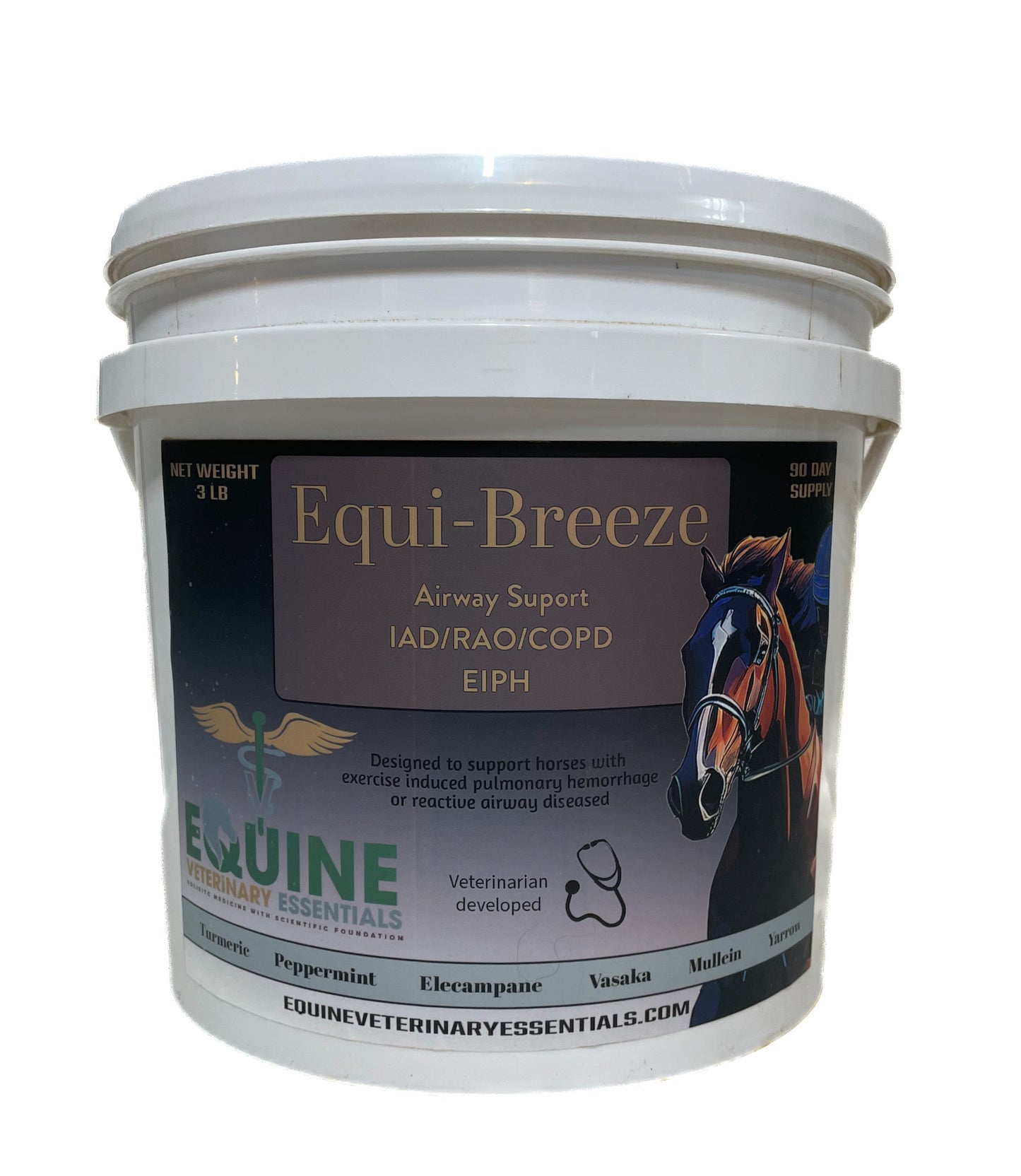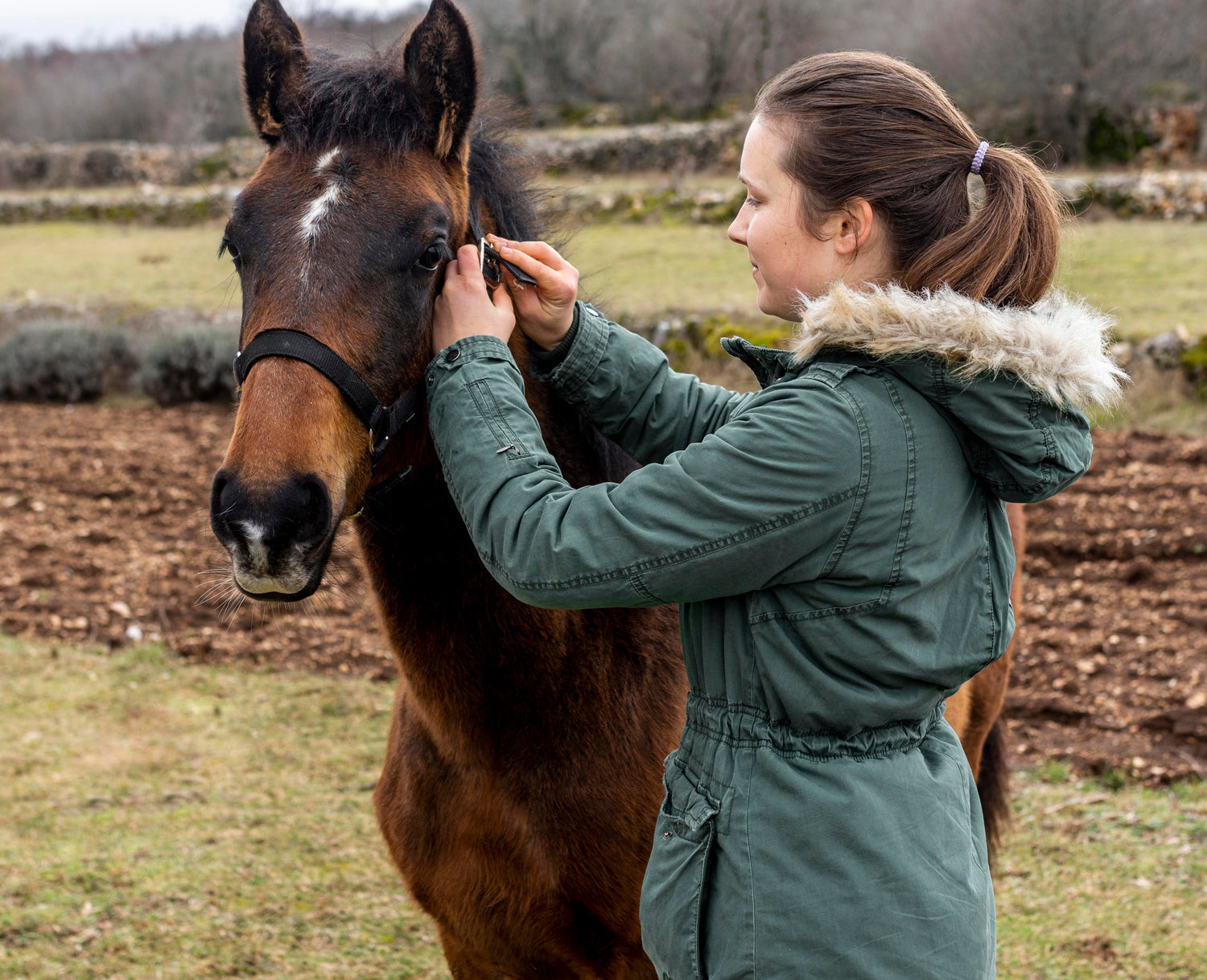
Equi-Breeze: Research Behind the Formula
Equi-Breeze is built on a foundation of herbal science. Below is a selection of peer-reviewed research supporting the respiratory benefits of the key botanicals used in our formula.
Mullein (Verbascum thapsus)
- Anti-inflammatory, antioxidant, and antimicrobial activity
- Soothes mucous membranes with mucilage content
- Expectorant effect from saponins, supporting mucus clearance
- Effective against Klebsiella, Staph, and E. coli in vitro
- Antioxidants like vitamin C and flavonoids support lung health
Elecampane (Inula helenium)
- Antimicrobial sesquiterpene lactones effective against Staph
- Activity against Mycobacterium tuberculosis in vitro
- Demonstrated anti-inflammatory properties
Yarrow (Achillea millefolium)
- Potential antiviral activity against coronaviruses
- Well-established anti-inflammatory effects
Peppermint (Mentha piperita)
- Menthol acts as a decongestant to ease breathing
- Improves lung function (FVC and peak inspiratory flow)
Malabar Nut (Adhatoda vasica)
- Bronchodilator and expectorant effects (vasicine, vasicinone)
- Improves lung function and asthma symptoms in clinical trials
- Reduces airway inflammation and inflammatory cytokines
- Inhibits hypoxia-induced mitochondrial dysfunction
- Suppresses mucus overproduction (MUC5AC inhibition)
Collapsible content
References
- References
- African Journal of Respiratory Medicine. (2022). Herbs used in boosting respiratory health.
- Amaliyah, E., et al. (2024). The Effectiveness of Peppermint Aromatherapy Inhalation in Nursing Care for Ineffective Airway Clearance in Pulmonary Tuberculosis Patients at Drajat Prawiranegara Hospital, Banten, Indonesia: Case Study. International Journal of Social Science and Economics Research, 2(6), 1562-1577.
- Dey, A., et al. (2021). Adhatoda vasica rescues the hypoxia-dependent severe asthma symptoms and mitochondrial dysfunction. American Journal of Physiology-Lung Cellular and Molecular Physiology.
- Healthline. (2021). What Is Elecampane Root, and Does It Have Benefits?
- Hemmati, A. A., et al. (2011). Yarrow (Achillea millefolium L.) extract impairs the fibrogenic effect of bleomycin in rat lung. Journal of Medicinal Plants Research, 5(10), 1843-1849.
- Kahraman, Ç., Ekizoğlu, M., Kart, D., Akdemir, Z. Ş., & Tatlı, İ. İ. (2011). Antimicrobial activity of some Verbascum species growing in Turkey. FABAD Journal of Pharmaceutical Sciences, 36(1), 11-15.
- Kumar, K. P. S., et al. (2010). Indian traditional herbs Adhatoda vasica and its Medicinal application. Journal of Chemical and Pharmaceutical Research, 2(1), 240-245.
- Longdom Publishing. Vasaka (Adhatoda vasica Nees): Traditional Uses and Medicinal Applications in Ayurveda.
- Mahdavi, S., Amiradalat, M., Babashpour, M., Sheikhlooei, H., & Miraj, S. (2015). The antioxidant and antibacterial activities of the essential oil and extracts of Verbascum thapsus L. Journal of Medicinal Plants Research, 9(8), 276-283.
- MedicalNewsToday. (2023). Mullein for asthma: What are the benefits?
- Memon, T. A., et al. (2023). Inhibition of TRPA1, Endoplasmic Reticulum Stress, Human Airway Epithelial Cell Damage, and Ectopic MUC5AC Expression by Vasaka (Adhatoda vasica; Malabar Nut) Tea. International Journal of Molecular Sciences, 24(12), 10303.
- Riaz, M., Zia-Ul-Haq, M., & Jaafar, H. Z. (2013). Common mullein, pharmacological and chemical aspects. Revista Brasileira de Farmacognosia, 23(6), 948-959.
- Sánchez-Vioque, R., et al. (2022). Antioxidant, Anti-Inflammatory, and Antibacterial Properties of an Achillea millefolium Extract and Its Supercritical Fractions against Helicobacter pylori. Antioxidants, 11(10), 1960.
- Sharma, M., et al. (2022). Evaluating the Potential of Adathoda vasica against Respiratory Diseases: A Comprehensive Review. Current Drug Metabolism.
- Speranza, L., Franceschelli, S., Pesce, M., Reale, M., Menghini, L., Vinciguerra, I., ... & Grilli, A. (2010). Antiinflammatory effects in THP-1 cells treated with verbascoside. Phytotherapy Research, 24(9), 1398-1404.
- Tatli, I. I., & Akdemir, Z. S. (2006). Traditional uses and biological activities of Verbascum species. FABAD Journal of Pharmaceutical Sciences, 31(2), 85-96.Turker, A. U., & Gurel, E. (2005). Common mullein (Verbascum thapsus L.): recent advances in research. Phytotherapy Research, 19(9), 733-739.
Equine Veterinary Essentials
Equi-Breeze | Veterinarian Formulated Equine Respiratory Supplement
Regular price
$54.99 USD
Regular price
$49.99 USD
Sale price
$54.99 USD
Quantity
